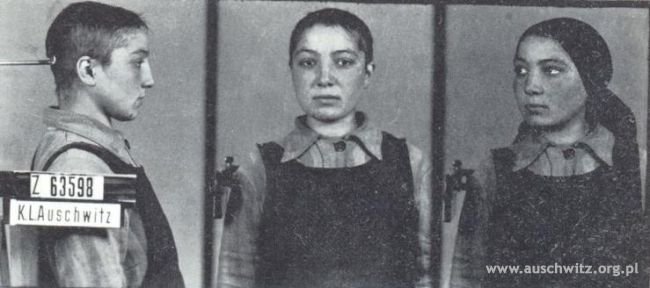Where is the Gypsy genocide?
Historians estimate that 500,000 Gypsies were killed in the five extermination camps and concentration camps.
The Porrajmos Gypsy is less systematic than the Jewish genocide, since essentially concerns the Gypsies of Greater Germany in 1940, Austria and Bohemia and Moravia built the great Reich.
The December 24, 1941 is the date that sealed their extermination. Almost immediately, a first gassing operation is carried out at Chelmno.
Because of its political and cerebral rheumatism, Europe for 70 years, studied with difficulty or with indifference flat, with a weary sigh, this single event,
Both the Holocaust seems to be a foreclosure making problem, is haunting in a memory having no knowledge of the same structures of the Holocaust, as the Porrajmos Tzigane succession of taiseuse indifference about individuals without state waste non-recyclable Europe without messiah people without history, outside of neighborhood stories.
It is remarkable that the denial pseudo-controversy on the use of gas chambers essentially to the extermination of the Jews, not the gypsies.
The passages of the Journal of Rudolf Hoess, head of the Auschwitz-Birkenau camp, on the Gypsies are a significant introduction to the tragic farce of extermination: « They caused me much concern at Auschwitz, they were not least my favorite prisoners (…) » emotional Declaration open heart, really touching …
At Auschwitz-Birkenau, three acmes are wholly entries in the Holocaust: the genocide of the Gypsies, the gassing of the simulacrum-camp, installed on Birkenau for inspections of the Red Cross (for Jews deported to Theresienstadt) and revolt the Sonderkommando of October 7, 1944.
The liquidation of the Gypsy camp was mentioned in the writings of camp survivors. Rudolf Vrba and Filip Müller, among others, give an accurate description. Unlike most of the Jews, the Gypsies, who have long felt the smell of burning flesh in life that went up in smoke near their camp knew what awaited them. The hope of being a chosen people was absolutely foreign.
Thus, all historical evocations agree on the difficulty of bringing the Gypsies into the gas chambers: shouting, refusal, getaways, haggling … Life does not surrender so easily, even on the brink, she claims her law, his assertion. We had to shoot more, fight more, shoot more, repelling all attempts to bribe, blackmail.
On 2 August 1944, 2897 women, children and men were taken to the gas chamber and killed. The Gypsy camp, Birkenau, BIIe sector Lagersperre (defense entering the camp and out), ceased to exist on August 2, 1944. Again, Hoess pages speak for themselves: « There ‘ was not easy to get them into the gas chambers. I have not seen it myself, but Schwarzhuber told me that no Jews from extermination been so difficult. For him this execution were particularly painful because he knew them well and almost all had maintained good relations with them. »
Filip Müller, Sonderkommando Auschwitz, remembers stunning with this unique moment in the history of Birkenau: « At the beginning of August 1944, the Nazis began to exterminate the Gypsies as » representatives of enemy races » . Before sending them to the gas chamber, was moved into many other camp; it may barely survived 3000 (…) I then noticed an unusual sight I’d never seen the antechamber of death. Many men passionately shook their wives in their arms in an ultimate sexual embrace. Thus they gave the last farewell to be the most expensive they had in the world – and also to their own existence. »
As the Gypsies have no state, no « repair » was made by Germany after the Genocide. Double negation of the life rights of the individual and recognition of its destruction. No written memory among Gypsies, so the memory that endures is the oral memory. January Yoors wrote in his book that « Gypsies do not like the Jews, messianic worldview, or the awareness of a glorious past. Oral traditions do not extend beyond four, up to five generations, and they go out to the death of an ancestor that no known living. There is no legendary hero among the Gypsies, no story about the origin, no justification of the wandering life. »
Philippe Mesnard, in his article in the margins (Consciences of the Holocaust), properly means the difficulty of a recognition of the gypsy genocide: « Until now, this has complicated public intervention Gypsies (and which the and rendered them vulnerable) certainly holds for a large part, to their externality to the logic of discourse and representation of recognition. When Spielberg cry of tens of millions of spectators, crying for Gypsies? Are they entitled to a Schindler? Precisely because the form -the driver, the magnetic sense of sensibilité- is not there, it fails elsewhere than where the reception is present and attentive. There is in reception (in logic that determine it) identificatory a report which does not meet the Gypsies nor their existence or their history, or their presence. Who identifies with a Gypsy? Who can get closer to their story as if it were his own? What individuation process are they subject? »
Recently, the memory of gypsy genocide is integrated into the Holocaust Memorial approach. But as for the Jewish genocide, this memory is mainly concerned with the event to forget its structures and conditions of possibility, which makes both possible recognition of the genocide and persecution of Roma and Gypsies in Europe. Historicity forget historiality, making history … and that makes possible the stutter of modernity in its relations with the Gypsies and Roma.
In his article News of Porrajmos (Consciences of the Holocaust, Kimé, 2000), Ian Hancock pointed out, rightly, that the Gypsy was the other victim and not the full-fledged victim of the Genocide perpetrated by the Nazis: « My greatest hope is that we end up no longer be classified as « other victims », and we are finally fully recognized as, with the Jewish population, the only people to have been designated to be eradicated the surface of the earth. »
In 1996, at the 26th academic conference Holocaust and the Churches in Minneapolis, Yehuda Bauer was this scathing and lucid statement: « Fifty years after the end of World War II, one of the most terrible acts of genocidal Nazi regime the mass destruction of the Roma people, is still widely ignored. Ongoing discrimination and persecution, underpinned by racist theories that are reminiscent of the Nazis behaviors continue to occur, especially in European countries. It is the feeling of the participants of the 26th conference. It is the responsibility in their democratic government, religious organizations, as well as academic and institutional bodies to call on governments and political parties of the countries mentioned to act resolutely to fight against anti-Gypsy policies, if they continued to be applied, could well lead to a genuine political genocide. »
The Gypsy genocide shows, again, the interest of the work developed in the Philosophy of the Shoah (to be published in October 2014 by Editions Age of Man): modernity has the same structures as those who give themselves to see in the Holocaust … and lingering in an alleged legitimacy.
Traduction Harold Lush.

